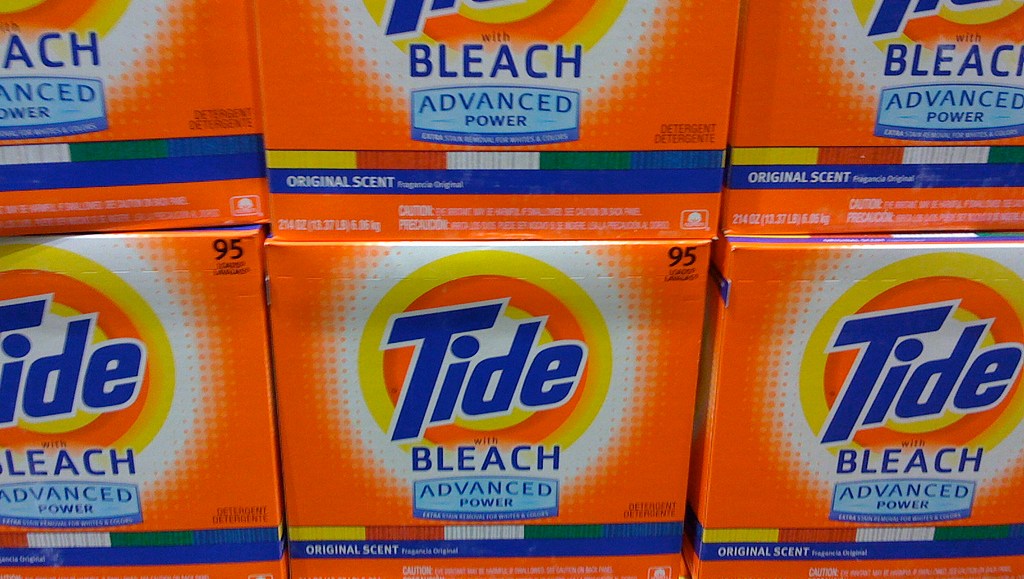
As brands should well understand by now, launching a branded hashtag campaign can be a bit like leaving teenagers home alone for a weekend. They invite a few friends over and before you know it a whole village of hooligans has invaded your space and is trashing your stuff. You end up coming home to a big mess to clean up. And yet, brands still insist on using those hashtags.
The latest brand to take the hashtag gamble is Tide. The detergent maker started using the promoted tweets for its #cleanwins campaign just this morning. But a quick Twitter search for the #cleanwins hashtag shows that people aren’t exactly using it the way the brand intended. Here is a breakdown of how Tide’s #cleanwins hashtag campaign evolved, or rather devolved, once it launched. Watch how it can all go so wrong, so quickly for branded hashtags.
First, the brand initiates the hashtag as part of a tie-in to football season and pushes it out through Twitter promoted tweets:
When your wife washes your Super Bowl Miracle Stain, you don't get mad. You get even. #cleanwins https://t.co/veW1gK5y8T
— Tide (@tide) September 5, 2013
Enter other tweets that make sense for the hashstag #cleanwins, but don’t have to do with Tide’s version:
Baking soda, vinegar, peroxide & lemon are great ingredients to use instead of conventional cleaning products. #cleanwins
— The Team at TheSFile (@TheSFile) September 5, 2013
The one who has clean hands and a pure heart, who does not trust in an idol or swear by a false god. Ps 24:4 #cleanwins
— His Way (@Godinthewhisper) September 5, 2013
Now, for some criticism about Tide’s sexist messaging and confusion regarding the hashtag:
“@tide: When your wife washes your Super Bowl Miracle Stain, you don’t get mad. You get even. #cleanwins https://t.co/JqcpklTq7r”
I refuse to believe that most men lack opposable thumbs and the capacity to understand how a washer works. #cleanwins @Tide
— Molly Cantrell-Kraig (@mckra1g) September 5, 2013
Is #CleanWins supposed to be about religion, the Super Bowl, or doing your laundry? I’m confused.
— Abby Nielsen (@absterpoo) September 5, 2013
And then, of course, there’s drugs. Of course there’s drugs:
Wake n bake time #cleanwins pic.twitter.com/LO32M1e1mN
— kyle randall (@purplesyurp) September 5, 2013
And also racist stuff:
https://t.co/0YHeQYV63Y Funny Asian Guy in Slow Motion! LMAO! #cleanwins
— Jeff Mauder (@Maudernized) September 5, 2013
And, bizarrely, a smattering of anti-Syrian war protest, with zombies:
https://t.co/o6B14QPnfT #cleanwins and no #war in #stria. A MESSAGE FOR US ALL PLZ RT!!!!!!!!!!!!!
— Brandon Copeland (@granalbanil) September 5, 2013
Of course, this is just from today, so there will no doubt be plenty more to come. Good luck cleaning up this mess, Tide. #cleanwins.
Image via Flickr
More in Marketing

WTF is the CMA — the Competition and Markets Authority
Why does the CMA’s opinion on Google’s Privacy Sandbox matter so much? Stick around to uncover why.

Marketing Briefing: How the ‘proliferation of boycotting’ has marketers working understand the real harm of brand blockades
While the reasons for the boycotts vary, there’s a recognition among marketers now that a brand boycott could happen regardless of their efforts – and for reasons outside of marketing and advertising – that will need to be dealt with.

Temu’s ad blitz exposes DTC turmoil: decoding the turbulent terrain
DTC marketers are pointing fingers at Temu, attributing the sharp surge in advertising costs across Meta’s ad platforms to its ad dollars.





